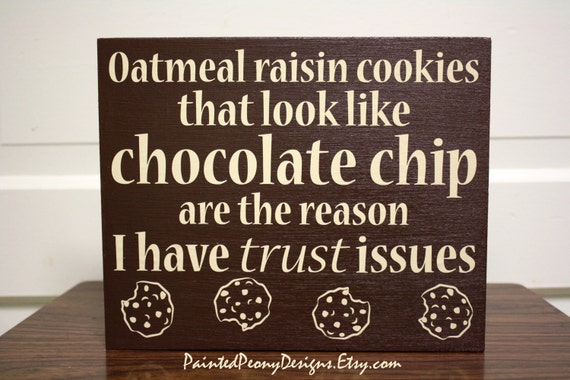 I have a friend who passionately detests Oatmeal Raisin cookies. She doesn't actually hate raisins, on their own. Her thinking is that one always expects chocolate chips in a cookie. Anything else is a bait-and-switch. A disappointing bait and switch.
I have a friend who passionately detests Oatmeal Raisin cookies. She doesn't actually hate raisins, on their own. Her thinking is that one always expects chocolate chips in a cookie. Anything else is a bait-and-switch. A disappointing bait and switch.
We like to predict our foods. I, personally, predict that when a restaurant menu says something comes with “jack cheese”, I assume they mean Monterey Jack. Imagine how mad I was when my no-spicey-food-wimpy-tastebuds were given Pepper Jack cheese when the menu referenced “jack” cheese.
I think that sometimes our students think that they know what reading passages are going to be about -- only to be surprised when the passage turns out differently than expected.
Or worse -- they don’t think about it at all. They just start a “cold” read.
One of the ways we can help our readers -- both our struggling readers and our high-achieving ones -- is to teach them how to make text predictions before they read.
This is super simple. Here’s how to do it.
- Step One: Before the students read a passage, the teacher selects a handful of words (colorful, unusual, and/or unfamiliar) that were used by the author. If you have time, you can select 20. If you are doing this as a bellwork or a quick activity, try selecting about 10-ish. You may put those in categories for the kids.
- Step Two: Students work in small groups to combine the words into sentences that might make sense (reviewing or working to define unfamiliar words)
- Step Three: Students use their sentences to make predictions of what the passage is about.
- Step Four: Students read the actual text.
Hold on.
What just happened? Several awesome benefits of this strategy.
First, your students just activated any prior knowledge they may have had -- or showed you-the-teacher more closely where those prior knowledge gaps exist. (i.e. They’ve heard about the Fountain of Youth or they live in Ponce de Leon neighborhood but they don’t know about the Timucuan)
Third, you gave kids a purpose for reading. They were reading in order to figure out if their predictions were correct.
Fourth, students they looked at word choice, which is an important ELA/formerly-known-as-the-shhh-Common-Core skill as well as helpful in discerning author point of view and/or bias (which are decidedly Social Studies skills).
This is a quick (5-10 minutes) strategy to help students preview text and make predictions -- as well as acquire (and own) new vocabulary.
Help your kids predict whether the cookies are raisin or chocolate chip.
Try this new strategy as a different way to help students preview text - and let me know how it goes! As always, I love to hear from you!
-Tracy
No comments:
Post a Comment